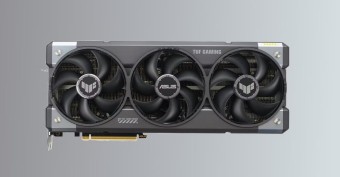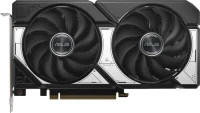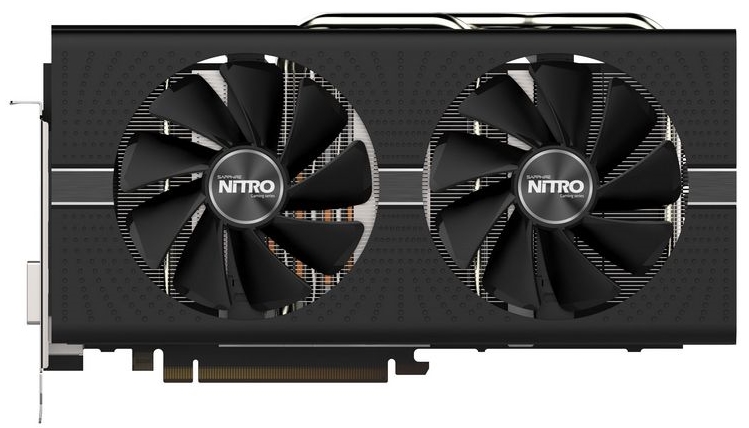TOP 5 AMD Radeon graphics cards under $200
We independently test the products and technologies that we recommend.

In a special table, you can compare all five AMD Radeon graphics cards from the review. And on the link you will find the entire catalog of video cards.
The low power consumption of the RX 550 chips allows you to make simple and compact graphics cards. In the case of the version fromWe have a very compact version of Sapphire, which takes up one and a half slots and is combined with mini-ITX motherboards without reservations. To do this, I had to tinker a little with the cooling system: the core is covered with a solid radiator in the form of a single piece of aluminium and a large single cooler.
In comparison with the older brother of the RX 560, this model has fewer stream processors and (512 vs. 1024) and 32 texture units instead of 64. At the same time, the frequency of the core is actually identical to 1195 MHz, and the memory operates at the same frequency of 7000 MHz. At the same time, the card has a very good overclocking potential and with a successful combination of circumstances (often overclocking depends on a particular model), you can get an increase of 320-360 MHz in the core. This is almost a third of the rated power, which is very, very cool. It is no less impressive that a small cooler calmly handles with such an increase in power and the card heats up by 3-4 degrees more during acceleration.
If we translate this into the plane of games, then the average FPS level will be somewhere 10-15% lower than that of the RX 560. But the difference in price is much more noticeable. In some stores, the card can be found for a ridiculous $120. Yes, she has no special groundwork for the future, but right here and now she will allow you to play quite comfortably on high graphics settings and Full HD resolution in the Witcher and WOT. Or drive at low-medium in 2019 games like Rage 2 or Sekiro Shadows Die Twice. In general, a great option for thrifty gamers.

The Radeon RX 560 has become the successor to the Radeon RX 460, which should impose a struggle in the low-cost segment of the terribly popular GeForce GTX 1050. Unlike the previous generation, the RX 560 is based on the Polaris 21 chip, in which all 1024 computing units are activated instead of 896, and the number of texture modules has been increased from 56 to 64. In general, the chicken is grain by grain, and the power has increased by a little more than 10%.
According to official specifications, the core frequency of the RX 560 is stated in the range from 1175 MHz in the base to 1275 MHz with boost. In the case of this model, MSI aspired to silence and reliability, so the graphics card was not equipped with an additional power slot, and the core frequency was fixed at 1196 MHz. Accordingly, the overclocking potential is not the most powerful here, it is extremely problematic to squeeze more than an additional 6-7% from the core. The flip side of the coin is a quiet and efficient cooling system. Even loaded with heavy games like Metro Exodus and running at the limit of the MSI RX 560 AERO remains virtually silent.
In terms of performance, the RX 560 from MSI shows virtually the same figures as its direct brother or competitor MSI GTX 1050 AERO ITX 2G OCV1 — 50 FPS in Battlefield 1 and 60 FPS DOOM 2016 at Full HD resolution and high settings. In most cases, NVIDIA is ahead of the curve, but Radeon has a trump card in the form of 4 GB of video memory, which is especially critical in today's demanding games.
Usually, after the announcements of new graphics card lines, manufacturers immediately release several variants, one of which follows the reference design, and the other is an attempt to change and improve it. Version RX 560 fromAsus is part of the popular ROG gaming line and there is no way to do without additional gloss.
To begin with, the card boasts a redesigned and improved design of the printed circuit board and higher-quality basic elements. Further created, we have a completely redesigned Asus DirectCU II cooling system, which effectively dissipates excess heat under heavy load and switches to passive silent mode with minimal load. However, this affected the size of the card, since instead of a single cooler here we have a rather large double one. In addition to this, there is support for proprietary Asus Aura Sync backlight synchronization.
And, of course, it was not without overclocking. Firstly, out of the box, the Asus RX 560 ROG-STRIX operates at an increased frequency of 1285 MHz. Secondly, the overclocking potential of the card has been pumped, 1350 MHz can be squeezed out of the core without any problems. Moreover, you do not need to mess with the settings yourself, the ASUS GPU Tweak II utility comes with the card, which allows you to switch the operating modes of the graphics card — from calm "quiet" with reduced power consumption to extreme "gaming", in which the core accelerates to 1336 MHz. Overall, this is a variant of the RX 560 without bottlenecks.
Naturally, all these improvements have affected the price, which is why the Asus RX 560 ROG-STRIX is now on sale for almost the same $180 as some basic models of the RX 570. But the performance here is almost identical.

In the MSI assortment, you can find 2 variants of the RX 570: MSI RX 570 GAMING X 4G and Armor. The first one has slightly higher memory and core frequencies, colorful backlight and game design. The second has slightly lower operating frequencies (but still high), a minimum of unnecessary decorations, a quiet cooler and a price tag 60% lower. It is not surprising that the Armor RX 570 model is still actively sold, and the Gaming version is very difficult to find.
The card is based on the Polaris architecture (manufactured using a 14-nm process) and has 4 GB of video memory. But if the standard versions have operating frequencies of 1168 MHz, then here we have overclocked out of the box to 1268 MHz. If we talk about manual overclocking, then the picture is not quite usual: with an increase in the power limit, the core rests against the ceiling of 1400 Mhz. This is not bad, but not the limit of dreams. But memory, on the contrary, accelerates with a bang, rising from 7000 to 8000 and above. If you tinker with the power limit and find the right settings, you can get a very good power gain.
To cool all this stuff, a simplified version of the MSI TORX cooler is used with a pair of fairly large coolers with metal styling. Interestingly, the cooler supports ZeroFrozr technology, which completely stops the operation of coolers in the absence of load. However the cooling system causes ambiguous impressions, since at a core temperature of less than 60 degrees it is almost inaudible, but once you cross this threshold, the coolers begin to make noise, be healthy.
The Nitro line fromSapphire has been very popular with gamers since the Radeon R9 390 model, thanks to a good combination of price, functionality and overclocking capabilities. NOT surprisingly, the Nitro version of the RX 570 also became a hit.
Usually, the appearance of a graphics card is not something to focus on. But not in the case of Sapphire Nitro. The top of the card is covered with a decorative casing made of matte plastic that is pleasant to the touch. The side racks rest against a printed circuit board reinforced with a backplate, so the plastic does not bend and does not creak, and the design gives the impression of a monolith.
At the same time, the cooler corresponds to the chip of Quick Connect — it is easy to remove (in fact, you need to unscrew 1 screw and remove the latch) to clean the turntables or replace the thermal paste. An easy replacement is a Sapphire chip. The reverse side of the card is protected by a massive metal plate with an original design and printing. In one of the recesses, you can find a BIOS switch that switches the card from "quiet" mode to "boost". In general, it turned out to be both beautiful and functional.
A nice feature of the Sapphire Radeon RX 570 Nitro+ graphics card is the high factory overclocking for both "red" camp graphics solutions. The clock frequencies of the base and Boost frequencies were increased from 1168/1244 MHz to 1257/1340 MHz, which corresponds to an 8% increase. With manual overclocking, the graphics card is able to conquer the frequency of 1430 MHz in the core and 2200 MHz in memory.
And here there is one interesting nuance — the company has equipped the card with an additional 6 pin connector, so the overclocking ceiling here rests only on the capabilities of the card itself. Well, plus, the engineers have upgraded the cooling system very well, so the coolers can handle the increased load quite calmly, without crossing the line at 65 °C. Excellent result.
Articles, reviews, useful tips
All materials


































